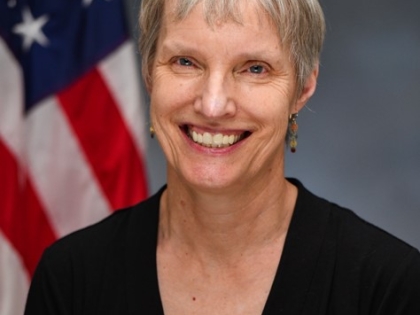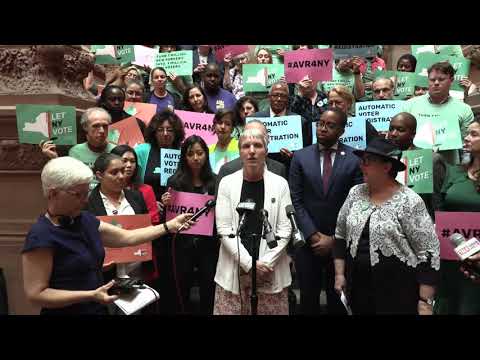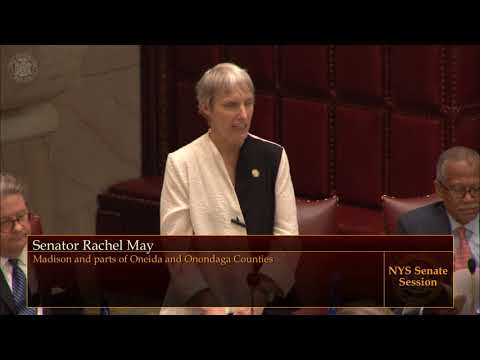
NY must protect our precious public waters (Guest Opinion by Sen. Rachel May)

Chittenango Falls State Park
For decades, we have grown used to bidding farewell to friends and family, neighbors, and coworkers, as they happily migrated away from Northeast winters to warmer climates. But careful observers believe that trend is reversing. Triple-digit heat waves and wildfires in the southwest, oppressive humidity and punishing floods in the southeast and Gulf Coast, are making many people look longingly towards the more livable climate and abundant freshwater of Upstate New York.
We should welcome these climate migrants, as our region welcomes refugees from around the world. We should also be doing whatever we can to care for the precious freshwater resources that make our region increasingly the envy of the world. 97.5% of the planet’s water is salt water and nearly all the rest is locked in ice, inaccessible in swamps, or underground. Only about 1/8000 of Earth’s water is available as freshwater in lakes and rivers, and global warming is drying up important water sources.
Meanwhile, one of the richest stores of available freshwater is New York’s Finger Lakes-Lake Ontario region. Our 260 lakes and over 16,000 miles of streams provide drinking water for millions of people and support agriculture, fishing, forestry, industry, and recreation. They are the main reason 24 million tourists visit our region each year.
Water governance is hard. Virtually every lake crosses village, town, or county boundaries. Even within the boundaries, people have very different needs and relationships to a lake, whether they live on the lakeshore, drink the water, boat or fish, work in the tourism economy, or farmland in the watershed. Most lakes of any significant size have watershed associations that seek to build a common approach for the good of the lake as a whole. As a longtime participant in the Onondaga Lake Watershed Partnership, I am in awe of the work these dedicated citizens do, and appreciative of the assistance they get from local governments, soil and water conservation district personnel, and other experts.
We at the state level also need to give them more tools for protecting the lakes from threats like harmful algal blooms (HABs), invasive species, erosion, and industrial and agricultural pollutants. We also need to fight any efforts to privatize our water supply and ship precious water out of state. This is why I have introduced new bills that I believe should be a priority for the Legislature in the coming year.
First, the Public Water Justice Act (S.9499) prohibits the bottling and sale of the state’s waters without a license, and requires anyone profiting off the sale of our water to pay into a fund to protect New York’s watersheds. New York currently has 169 certified water bottling facilities. Only 17 are run by NY companies. 19 are run by foreign companies, including 9 from Italy and 2 each from New Zealand and the UK. The Department of Health regulates the quality of the water in the bottles but the facilities are not answerable to the Department of Environmental Conservation (DEC) or obligated to protect the water supply from which they draw their product and make their profits. We need to change that.
Second, the Open Water Data Act (S9520) builds on efforts by the federal government and states like California, Arizona, and New Mexico to modernize water data. In New York, multiple levels of government have a role in water oversight, and a large network of volunteer citizen scientists and grassroots organizations collect valuable information. The Open Water Data Act will task the state with creating a simple, public-facing interface that will collect and standardize all the state's water data and make as much of it available to the public as possible. Good data are key to good government, and we must track our water resources if we wish to steward them carefully.
Third, I will soon be introducing the PFAS Discharge Disclosure Act, to require the DEC to create rules for testing and reporting on the discharge of so-called “forever chemicals” to the waters of the state. This class of chemicals is commonly used in the industrial production of plastics and is ubiquitous enough to be found in food, clothing, personal care products, and soils, as well as water. They accumulate in our bodies and can disrupt fertility, child development, immune systems, and hormonal activity. As a member of the US EPA’s Local Government Advisory Committee, I helped develop recommendations for assisting local governments to protect residents from the harmful effects of PFAS, and this bill will facilitate that process.
Our upstate lakes and streams sustain us, enrich our communities, attract people from around the world, and bring us beauty and delight. It’s our duty to anticipate the mounting pressures they will face in a rapidly changing global climate and to take action to protect them for the benefit of all.
Senator Rachel May



